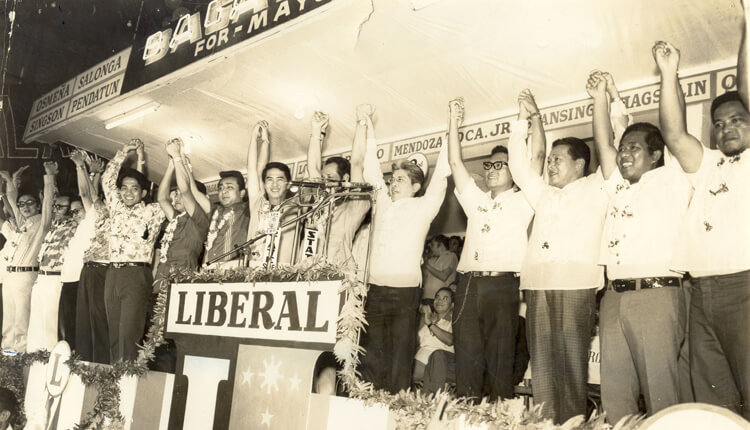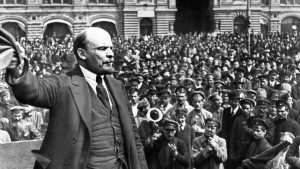WHAT IS WRONG WITH ‘PROTRACTED WAR’ AND THE ROAD TO PLAZA MIRANDA
Special Report on the Second Congress of the CPP (Part 5)/Pinoy Exposé Team

Editor’s Note:
In the preceding series of this special report, we discussed how the Communist Party of the Philippines, (CPP) seeing and interpreting the world from the view point of its founder, Jose Maria Sison, was proven totally wrong in anticipating the turn of global events, especially on China’s decision to discard support for “wars of national liberation” after the death of Chairman Mao Zedong and Red China’s decision instead, to adopt the ‘peaceful co-existence’ policy of the Soviet Union that it once denounced as “revisionism” of Marxism-Leninism.
At this point, we now focus discussion on the equally erroneous— and futile—used by the CPP of Mao’s theories on guerrilla warfare (protracted people’s war) or ‘armed struggle’ as its principal means to seize power. We shall also discuss how the arrogance of CPP founder, Jose Maria Sison, his belief in his ‘superior’ understanding of Marxism-Leninism, led to the first overt act of communist terrorism in the country, the Plaza Miranda bombing.
As previously stated, this series is based on CPP documents, its amended Constitution and revised ‘Program’ that were among those recovered by government forces in Baguio City last March 13, 2020, from Julius ‘Ka Nars’ Giron.
Giron and two of his companions were killed after they allegedly resisted the serving of an arrest warrant against him.
Giron was the elected CPP chairman during the Second Congress of the CPP held from October 24 to November 7, 2016, in the hinterlands of Surigao del Sur.
IN strict adherence to the “3-stages” of the ‘protracted people’s war’ (PPW) laid down by Chairman Mao, the CPP sees its armed struggle as consisting of the following: the strategic defensive stage, the period of strategic stalemate and right after this, the period of the strategic counter-offensive, the point when the balance of military strength has finally shifted to the party and its armed wing, the New People’s Army.
But clearly, if after more than 50 years, its insurgency has never managed to go beyond the first stage (strategic defensive), there is “something wrong” about the PPW of Chairman Mao as pursued by the CPP.
To us, this is not surprising. As pointed out in the last series of this special report, the first major error committed by the CPP and its founder, Jose Maria Sison was their failure to anticipate the changes in global events, particularly, Red China’s decision to dumped its previous policy of supporting all “wars of national liberation” in Third World countries, especially after the death of Chairman Mao.
This change in Chinese policy effectively shut the door on its further material support to the CPP-NPA. And no thanks too, to its rabid “anti-Sovietism,” the CPP had also managed to close the door of getting any support from the Soviet Union with Mao’s death in 1975.
It does not also take any person to be a ‘Marxist-Leninist,’ much less, an “expert Maoist” to realize that when Mao formulated the 3 stages of his PPW, central to its entering the second and final stage, the stage of victory, is its eventually getting material support from the outside so it can transform into a “conventional army.”
Simply put, any guerilla war lacking material support from the outside is doomed to fail.
This is a truism of military history, from the Jewish Revolt in AD 66-73 to the American Revolution in 1775, to the Peninsular War in 1808 under Napoleon Bonaparte to China’s own Civil War from the 1930s to 1949 and down to Vietnam’s struggle against French and American Imperialism between 1949 and 1975.
In the case of the Philippines’ ‘Huk Rebellion’ between 1950 to 1953, there was foreign aid—but it was US Imperialism helping the Philippine government.
In the events described above and excepting the Jewish and Philippine experience, it should be emphasized that all these revolutions started their struggles through guerilla warfare but successfully concluded them through conventional warfare because of the material support of outside forces.
Stated differently, a guerilla army must “graduate” to a conventional army for it to triumphed against a professional military force like the AFP. If it cannot do so, it should better disband.
If misreading global events and adopting PPW without really understanding how it should develop are already two fatal errors committed by the CPP and Sison, we should add another here:
Forcing the “birth” of a “revolutionary situation” that it has so far failed to achieve after more than 50 years.

In his book, ‘Communism in the Philippines, An Introduction,’ (published by ADMU, 1990) author Alfredo B. Saulo, narrated that Sison, during his early years as a communist, would frequently visit erstwhile ‘Huk Supremo,’ Luis Taruc.
Taruc had surrendered on May 16, 1954, totally disillusioned with his old “comrades” in the Partido Komunista ng Pilipinas (PKP).
Taruc said the fundamental error made by the PKP then was to mistake “revolutionary mood” for the existence of a “revolutionary situation,” the basis for its ill-fated ‘Huk Rebellion’ in 1950 that ended in disaster by 1953.
Sure, Taruc said, a “revolutionary mood” had developed especially among the peasants, laborers and even among the country’s middle class, after the scandalous elections of 1946 and 1949.
But for the PKP to mistake it for a “revolutionary situation” that justify the resort to armed struggle is a mistake.
But flushed with his “superior” understanding of Marxism-Leninism and “fortified” by his new-found faith, Maoism, Sison ambitioned to do better than the Huks than wait for a revolutionary situation to occur before launching an armed struggle.
He would, like Lenin’s Bolsheviks in 1917, “precipitate” the creation of a revolutionary situation from the prevailing revolutionary mood, especially among the youth, in the early 70s.
The result, as we now know too, was the Plaza Miranda bombing of the Liberal Party proclamation rally on August 21, 1971, the first overt act of CPP-NPA terrorism.
When the bombing failed to produce the revolutionary situation that Sison dreamed despite blaming the incident to Pres. Ferdinand Marcos, the CPP-NPA were set on their way to an armed struggle that has dragged along with it, the country’s national unity, national progress and national development (end of part five).


